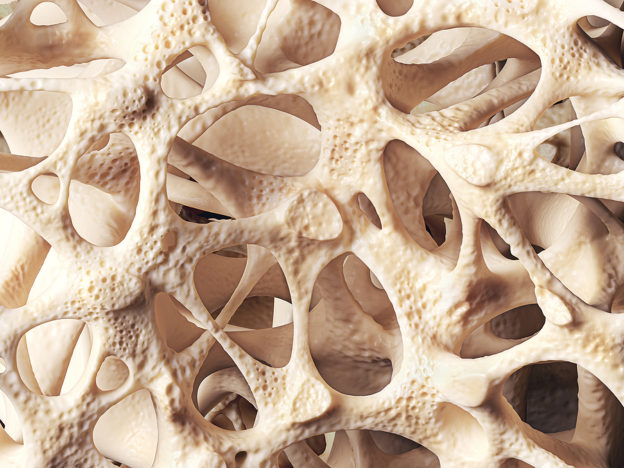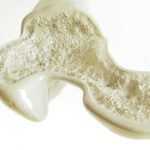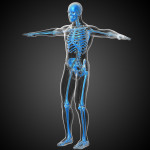By David Blyweiss, M.D., Advanced Natural Wellness
April 23, 2021
In my early days of elementary school, there was a spot in the day where we sang songs. Pop goes the Weasel, Skip to my Lou; silly stuff like that.
But there’s one song that actually had a little educational value to it. Do you remember Dem Bones?
“Your toe bone’s connected to your foot bone… Your foot bone’s connected to your heel bone and so on.” Right?
Then it goes on about how “dem dry bones” are going to walk around.
Well good luck with that! That’s where any educational value ends, because dem dry bones aren’t going to get anybody very far.
Live bone is actually moist and a little bit soft. It’s constantly being broken down and replaced. This makes your bones strong and flexible, so they can handle weight and pressure without snapping.
Open your arteries, improve blood flow for a new health miracle...
Did you know your circulatory system has over 60,000 miles of arteries, veins and other blood vessels, if stretched end to end?
But as you age, your blood vessels undergo changes, which may cause them to stiffen, thicken and get clogged.
GOOD NEWS! Doctors have now identified a “Miracle Molecule” inside your arteries that helps OPEN your arteries and IMPROVE blood flow.
It’s what Dr. Valentin Fuster calls it, "One of the most important discoveries in the history of cardiovascular medicine."To you, that means...
- Healthy blood pressure
- Sharper mind and memory
- Skyrocketing energy and muscular strength
- Increased pleasure and passion in the bedroom
- Improved circulation to every cell and organ in your body
Go here to discover a new natural way to significantly boost the levels of this miracle molecule in YOUR body NOW!
As we age, especially women (but men aren’t immune), we reach the point where old bone breaks down faster than it’s being replaced. The result is osteoporosis… weak, brittle bones that break and fracture easily.
Of course, there are drugs for that.
Do These Meds Cure Osteoporosis?
You’ve got the bisphosphonates. Fosamax, Boniva, Actonel and Reclast fall in this category. They decrease the speed at which bone is broken down.
That sound good in theory, doesn’t it? But if old bone doesn’t get broken down, how can it get replaced with new bone? So these meds stop bone loss in old bone, but do nothing to build strong and healthy new bone. How can that be a good thing?
Disproportionately, some of the side effects are esophageal inflammation, stomach problems, heartburn, nausea and abdominal pain. There can also be bone loss in the jaw, where cells in the jawbone die. These are not nice side effects.
There’s a newer drug out there for people who just can’t tolerate the side effects of bisphosphonates. Denosumab, which includes Prolia and Xgeva. You get a shot every six months.
But its side effects are just as bad. Maybe even worse.
You have to watch your blood levels of calcium and for signs of low calcium (hypocalcemia), like muscle spasms, tingling around your mouth and tingling in your extremities. And for some reason you have an increased risk of infection. So you have to be careful if you get any sort of fever, painful urination, or redness or swelling anywhere on your skin.
Are You Suffering From...
- Love handles and a pot belly
- Romance that isn't what it used to
- Forgetfulness and inattention
- Low (or no) strength and endurance
- A sex drive that's shifted into neutral...or worse
If so...you may have Mature Male Burnout. Click here to discover more about this unique condition and what you can do about it.
There’s also an issue with unusual fractures of the femur. And then you’ve got bone loss in the jaw. That’s similar to one of the side effects of bisphosphonates.
A new osteoporosis drug, romosozumab (Evenity) blocks a protein in the body that stops bone formation and increases its breakdown. It involves getting two back-to-back shots every month for a year, then treatment stops. That’s because the bone-forming effect wears off after 12 doses.
And this one comes with a black box warning. In addition to other side effects, it can increase the risk of myocardial infarction, stroke and cardiovascular death. That’s just terrible.
And despite all of the horrible side effects, not a single one of them actually “cures” osteoporosis.
So it’s a good thing there are some easy things you can do to improve your bone strength and density without these harmful meds.
Build Strong Bones the Same Way You Build Strong Muscle
A lot of people think bone health is all about vitamin D and calcium. Magnesium and vitamin K, too.
Yes, these are all important. You need to make sure you’re getting enough of them.
But just like you put stress on a muscle to make it bigger and stronger, you have to put stress on the bone.
Weight-bearing activities are great. These involve activities where your bones support your weight. Things like walking, climbing stairs, chair squats and dancing. They all “exercise” the bones in your legs, hips and spine to stave off mineral loss and help them remain strong and flexible.
But don’t neglect the upper body. There are a lot of upper body activities you can do with a resistant band, dumbbells or a medicine ball. Or you can use your own body weight to do things like wall push-ups.
If you need some help figuring out which kinds of exercises will work for you, check this out.
These activities work on your bones much the same way as they do your muscles – making them stronger and more able to support your body for everyday activities.
Just keep dem old bones moving!
P.S. If you’re a woman, I also recommend a little bit of bioidentical hormone therapy. I haven’t had a menopausal female not reverse osteoporosis while taking a natural product. Just keep in mind that insurance won’t pay for it.
SOURCES:
Kennel KA, et al. Adverse effects of bisphosphonates: implications for osteoporosis management. Mayo Clin Proc. 2009;84(7):632-638.
Benlidayi IC, et al. Oral bisphosphonate related osteonecrosis of the jaw: a challenging adverse effect. ISRN Rheumatol. 2013;2013:215034.
Diker-Cohen T, et al. Risk for Infections During Treatment With Denosumab for Osteoporosis: A Systematic Review and Meta-analysis. J Clin Endocrinol Metab. 2020 May 1;105(5):dgz322.
Pittman K, et al. Denosumab: Prevention and management of hypocalcemia, osteonecrosis of the jaw and atypical fractures. Asia Pac J Clin Oncol. 2017 Aug;13(4):266-276.
Fixen C, et al. Romosozumab: a Review of Efficacy, Safety, and Cardiovascular Risk. Curr Osteoporos Rep. 2021 Feb;19(1):15-22.







